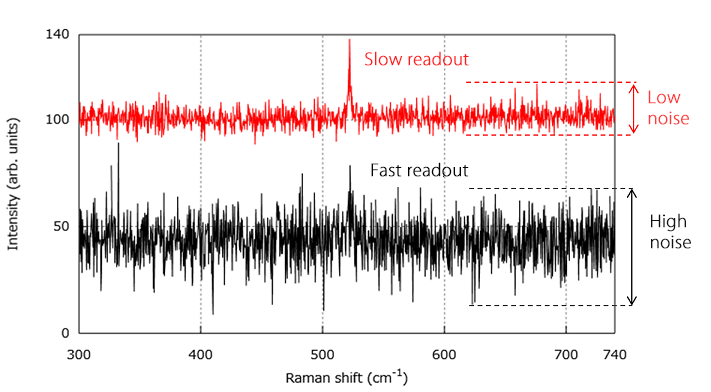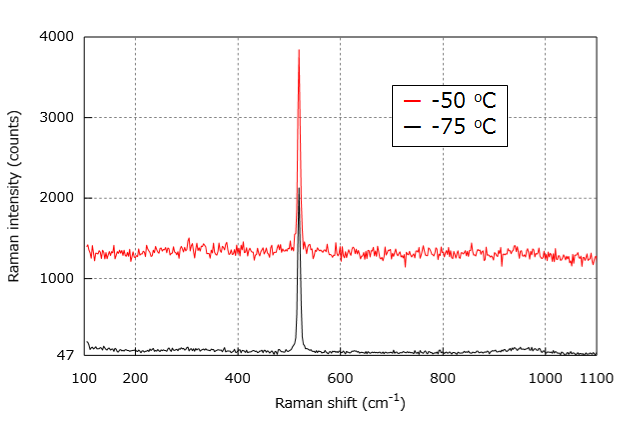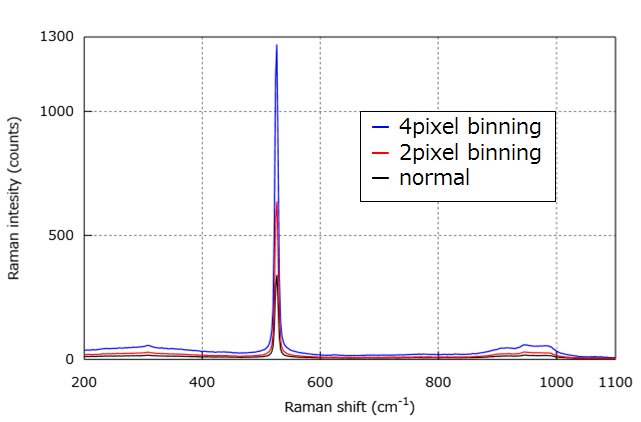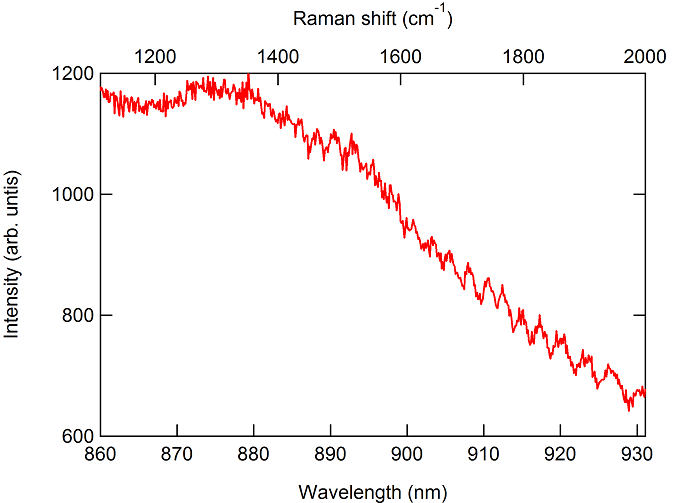Once the setting of this CCD detector is completed, the general preparation for measurement is completed. In CCD detectors, noise always occurs with the signal. By understanding the CCD detector and setting it correctly, you can obtain a spectrum with a high S / N ratio.
Origin of noise of CCD detector
The noise generated in the CCD detector is mainly divided into readout noise, dark current noise, and shot noise.
Readout noise……Noise generated during signal amplification and readout in electrical circuits. Noise can be reduced by switching the readout frequency.
Shot noise……Noise generated by the quantum effect of photons which can be modeled by a Poisson process. Also, this is called Poisson noise. The S/N ratio will be improved by increasing signal intensity because the noise rms is linear to the root of the signal.
Dark current noise……Noise generated by the dark current. The dark current is the noise without any input signal. It is generated by the thermal effect of electrons. It changes with the temperature of the CCD or exposure time.

Change of the S/N ratio with the setting of CCD detector
Change of the readout noise
The below figure is the change of readout noise. The lower the read frequency, the lower the read noise, and it is clear that even weak signals can be detected without being buried in the noise. However, since the time required for reading increases, if the S / N ratio is sufficient, it is possible to perform measurement in a short time by using high-speed reading.

Change of dark current noize
The cause of dark current is the heat of the CCD. Therefore, the CCD is cooled to suppress dark current. However, the dark current increases when the CCD does not cool down to the specified temperature, such as immediately after power-on. The figure below shows the change in dark current due to the cooling temperature. It can be seen that dark current increases with temperature rise and dark shot noise increases accordingly. Also, since the dark current increases in proportion to the exposure time, the magnitude of the CCD changes with the exposure time even at the same temperature.
Basically, the dark current noise can not be reduced, but if the baseline is larger than usual, check the temperature of the CCD once.

S/N improvement by using binning
Binning is the addition of adjacent pixel signals. Binning with a CCD increases the signal intensity and reduces the number of readouts, which reduces the noise associated with the readout. The following shows the change in spectrum due to binning. You can see that the signal strength is increased by binning. However, spatial resolution decreases in inverse proportion to the number of binnings because data of adjacent points is added. Therefore, it is used when you want to measure the S / N ratio high or you want to reduce the measurement data size when you do not need much spatial resolution.

Change the signal intensity by etalonning
Although it differs from noise, in visible CCDs, the oscillation of spectral intensity due to the interference of the CCD substrate appears in the near infrared region. This is called Etaloning. The graph below is the spectrum when using a 785 nm laser for the excitation wavelength. Etaloning occurs at wavelengths of 880 nm and above. If the signal is weak, the signal may be buried under the influence of etaloning. The magnitude of this etaloning depends on the type of CCD detector. For this reason, it is recommended to select a CCD with reduced etaloning when performing a lot of measurements in the near infrared region.
